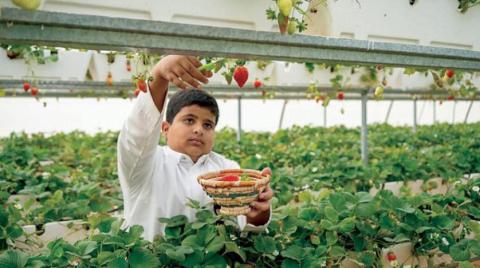
Average price of a food basket has increased 66 percent in the US and 3,000 percent in Lebanon in the past three years
MIAMI: “What we have right now is the confluence of the currency crisis, a debt crisis and a food crisis,” said Sara Menker, CEO of Gro Intelligence, a data and analytics company focused on food security and climate change, at the FII Priority conference on Thursday.
COVID-19, the Russia-Ukraine war and droughts in South America, among other factors, had disrupted supply chains, trade flows and agricultural production in the past three years, Menker said.
Consequently, the price of a basket of food had risen dramatically — 66 percent in the US, 2,000 percent in Sudan and 3,000 percent in Lebanon.
At the same time, “many countries have issued an unprecedented amount of foreign currency-denominated debt that they have to pay in US dollars, which are the same dollars they have to use to import their food, which has been devalued,” she said.
The three primary drivers of food insecurity and chronic malnutrition across the globe were climate, conflict and economic instability, said Ertharin Cousin, CEO and managing director of Food Systems for the Future, a nutrition impact investment fund.
Although there was a sufficient humanitarian response to the food security challenge, there was a “paucity of investment” in the adaptation of agriculture required to support a sustainable transformation of the food system, which in turn could support the environment and human health, and generate the economic return needed for everyone in the food sector, Cousin said.
For Gabrielle Rubenstein, co-founder and managing partner of Manna Tree, a global food supply chain private equity firm, it was the opposite case.
“I’m here to tell you that we have just announced that we’ve raised 640 million over four and a half years — that is the largest growth equity player in the world,” she said.
“When you look at what food supply chain and food security means, it doesn’t mean any more foreign direct investment. What it means is profitable business models that are your standard private equity firms that have revenue and that, more importantly, the top line growth is growing,” she said.
Yet, there are places where capital did not flow because investors considered those places too risky, Cousin argued.
“The challenge is that the risk lens that we use has limited the flowing of capital to certain geographies and certain entrepreneurs, particularly in the asset classes of food and agriculture.”
Africa, for example, was considered risky by investors who chose to see it as one continent instead of 54 countries, each with a different risk ratio, Cousin said.
It is not just the flow of capital that is debilitating food security globally.
As things stood, the inherent cost of capital was mispriced and needed to be driven down, Menker said. “The minute we do that it will unlock so much innovation, different types of return profiles and opportunities.”
Current food systems were not receiving enough money to undergo the transformation necessary to feed the projected population by 2050, especially when combined with climate disruption, she said.
Agricultural production would need to grow by about 60 percent to feed the population projected for 2050, Cousin said.
It was also important to distinguish food commodities from nutritious food, Menker said. “Yes, we do grow enough commodities, (but) we don’t grow enough nutritious food.”
Cousin concluded: “We don’t have the appropriate subsidies that support the regenerative production of nutritious food. That’s the opportunity that is in front of us if we really want to not only feed the world but nourish the world.”












